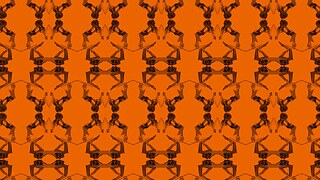Film as an example of a non-anthropocentric AI
The hypothesis of considering film a form of artificial intelligence was first put forward by filmmaker and theorist Jean Epstein in 1946. He describes film as the thinking ability of a technical apparatus, the cinematograph, and on this basis questions some of the fundamental principles of modern philosophy and its dualistic orientation. This makes Epstein a pioneer of the speculative or materialistic turn in contemporary philosophy.
Jean Epstein’s robot philosophy
The idea of understanding film as the thinking ability of a technical apparatus was first articulated by pioneer filmmaker and theorist Jean Epstein in 1946, four decades before Gilles Deleuzes wrote his famous reflections on philosophy and film. Epstein’s book The Intelligence of a Machine, translated into English by Christophe Wall-Romana in 2014, is still influenced by the early days of film when the cinematograph functioned as both camera and projection machine. Epstein’s concept not only pre-empts Deleuze’s approach but presents a complex film-philosophical system of its own. His suggestion to call cinema “machine thinking” becomes an explicit argument for the necessity of a new philosophy in relation to the emergence of the medium of film. Since Epstein quickly understands that such a philosophy is in opposition to the principles of modern thinking as shaped by Descartes and Kant, he talks about an “antiphilosophy.”
What distinguishes Epstein’s approach is that he describes the cinematograph as a “robot philosopher”, an individual thinking machine that develops “cinematographic thinking” and even a “mechanical philosophy.” This thinking is not simply an imitation of human thinking: “The cinematograph,” Epstein argues, “stands out as a substitute and annex of the organ in which the faculty that coordinates perceptions is generally located—the brain—the alleged center of intelligence” (Epstein, 2014: 65). Thus, Epstein postulates the necessity for a new kind of philosophical thinking and talks about a “non-human part”, a “half-thinking” or a form of thinking that works according to special rules of analysis and synthesis. Humans could not have created these rules without the cinematographic apparatus.
Epstein cites the growth of a plant filmed in time lapse as an example, which to him represents a liberation from time as perceived by humans. To Epstein, seeing the plant growing in time lapse demonstrates that time “as such” doesn’t exist – it is a phenomenon that is dependent on observation, a mere perspective, and the same thing applies to space: it is simply a perspective of co-existing things. In addition, Epstein states, the robot philosopher no longer distinguishes between subject and object, thus contradicting further foundations of modern philosophical dualism. For Epstein, the development of the motion picture explicitly marks the end of Cartesianism. He talks about an antiphilosophy with consequences for our epistemological foundations.
 The growth of a plant filmed in time lapse represents a liberation from time as perceived by humans to Epstein.
The growth of a plant filmed in time lapse represents a liberation from time as perceived by humans to Epstein.
A non-anthropocentric form of AI
Epstein’s position is doubly remarkable: on the one hand, it constitutes one of the earliest and most important arguments for the emergence of a philosophy of film and underscores an implicit relationship between film and thinking; on the other hand, it shows how, from the outset, these arguments are themselves related to a concept of artificial intelligence that is explicitly different from a living intelligence. Epstein expressly believes we need to recognise that in addition to organic thinking, there is also a mechanical thinking that produces different forms of understanding.
Epstein thus holds an explicitly post-humanist position that also implies a repositioning of our conventional understanding of AI: thinking back to the example of the cinematograph, artificial intelligence should be considered on the basis of non-anthropocentric criteria, i.e., without using the human form of intelligence as a reference point. Alan Turing’s question: “Can machines think?” (Turing, 1950) and his “Turing test” – the question whether a machine is capable of acting like a human being – have shaped the prevalent anthropomorphic or anthropocentric understanding of AI to this day. Towards the end of the 20th century, this understanding was underpinned by American philosopher John R. Searle’s so-called “Chinese room argument”. However, Epstein’s approach actually requires a different definition of the relationship between humans and machines, one that questions human supremacy.
In contemporary philosophy, various trends in speculative realism and new materialism put forward a sustained criticism of anthropocentrically and dualistically influenced positions of modern Western philosophy. Some of their approaches are surprisingly similar to Epstein’s thoughts.
Epstein and critical post-humanism
In this context, holistically influenced critical post-humanism is particularly interesting. It requires overcoming certain dichotomies related to Cartesian philosophy, such as mind and body, animal and human, organism and machine, or nature and culture, as American thinker Donna Haraway declares in her famous essay A Cyborg Manifesto: Science, Technology, and Socialist-Feminism in the Late Twentieth Century (1985). In the figure of the cyborg, Haraway notably creates an approach that is based on the indistinguishability of human and machine. Haraway states that by the end of the 20th century, it will no be longer clear who makes whom in the relationship between humans and machines. In consequence, there is an interrelationship between creator and created.
Haraway’s position can be linked to Epstein’s description of the non-human part of the cinematograph. Epstein’s half-human thinking resembles Haraway’s figure of the cyborg – in the sense of an interrelated existence with machines. This particularly applies to the potential of a radical, onto-epistemological shift within philosophical thinking. As Epstein argues, the cinematograph adds something unique to thinking, something humans alone would not have been capable of. It is therefore not entirely clear which part of the cinematograph’s thinking is human and which part is non-human, and which part generates which. This uncertainty requires a new kind of causality, studied extensively by quantum ontologist Karen Barad in particular: she bases her insights on quantum physics as interpreted by Niels Bohr.
The key term in this quantum-ontological and holistic form of causality is “intra-activity”, meaning the inseparability of different phenomena or objects. It is based on the principle of diffraction, which works by reconfiguring, rather than on the principle of mirror reflection. Instead of an interaction between two poles, the poles mutually constitute each other in a powerful intra-action. If we understand the human-machine relationship as intra-active, we see that this “uncertainty relation” is symptomatic for the diffractive kind of causality and that the same applies to the cinematograph: human and machine mutually constituting their thinking.
In conclusion, Epstein’s theories not only confirm the above-mentioned contemporary philosophical trends but demonstrate how these are complemented by the cinematograph’s thinking if we understand its performance as an intelligent thinking ability and analyse it accordingly. In doing so, the question of what artificial intelligence is and whether we can understand it as non-anthropocentric gains a new perspective: the antiphilosophy of the cinematograph thus becomes, as translator Wall-Romana summarises, a new epistemology that moves between human and non-human worlds.
The idea of understanding film as the thinking ability of a technical apparatus was first articulated by pioneer filmmaker and theorist Jean Epstein in 1946, four decades before Gilles Deleuzes wrote his famous reflections on philosophy and film. Epstein’s book The Intelligence of a Machine, translated into English by Christophe Wall-Romana in 2014, is still influenced by the early days of film when the cinematograph functioned as both camera and projection machine. Epstein’s concept not only pre-empts Deleuze’s approach but presents a complex film-philosophical system of its own. His suggestion to call cinema “machine thinking” becomes an explicit argument for the necessity of a new philosophy in relation to the emergence of the medium of film. Since Epstein quickly understands that such a philosophy is in opposition to the principles of modern thinking as shaped by Descartes and Kant, he talks about an “antiphilosophy.”
What distinguishes Epstein’s approach is that he describes the cinematograph as a “robot philosopher”, an individual thinking machine that develops “cinematographic thinking” and even a “mechanical philosophy.” This thinking is not simply an imitation of human thinking: “The cinematograph,” Epstein argues, “stands out as a substitute and annex of the organ in which the faculty that coordinates perceptions is generally located—the brain—the alleged center of intelligence” (Epstein, 2014: 65). Thus, Epstein postulates the necessity for a new kind of philosophical thinking and talks about a “non-human part”, a “half-thinking” or a form of thinking that works according to special rules of analysis and synthesis. Humans could not have created these rules without the cinematographic apparatus.
Epstein cites the growth of a plant filmed in time lapse as an example, which to him represents a liberation from time as perceived by humans. To Epstein, seeing the plant growing in time lapse demonstrates that time “as such” doesn’t exist – it is a phenomenon that is dependent on observation, a mere perspective, and the same thing applies to space: it is simply a perspective of co-existing things. In addition, Epstein states, the robot philosopher no longer distinguishes between subject and object, thus contradicting further foundations of modern philosophical dualism. For Epstein, the development of the motion picture explicitly marks the end of Cartesianism. He talks about an antiphilosophy with consequences for our epistemological foundations.

A non-anthropocentric form of AI
Epstein’s position is doubly remarkable: on the one hand, it constitutes one of the earliest and most important arguments for the emergence of a philosophy of film and underscores an implicit relationship between film and thinking; on the other hand, it shows how, from the outset, these arguments are themselves related to a concept of artificial intelligence that is explicitly different from a living intelligence. Epstein expressly believes we need to recognise that in addition to organic thinking, there is also a mechanical thinking that produces different forms of understanding.
Epstein thus holds an explicitly post-humanist position that also implies a repositioning of our conventional understanding of AI: thinking back to the example of the cinematograph, artificial intelligence should be considered on the basis of non-anthropocentric criteria, i.e., without using the human form of intelligence as a reference point. Alan Turing’s question: “Can machines think?” (Turing, 1950) and his “Turing test” – the question whether a machine is capable of acting like a human being – have shaped the prevalent anthropomorphic or anthropocentric understanding of AI to this day. Towards the end of the 20th century, this understanding was underpinned by American philosopher John R. Searle’s so-called “Chinese room argument”. However, Epstein’s approach actually requires a different definition of the relationship between humans and machines, one that questions human supremacy.
In contemporary philosophy, various trends in speculative realism and new materialism put forward a sustained criticism of anthropocentrically and dualistically influenced positions of modern Western philosophy. Some of their approaches are surprisingly similar to Epstein’s thoughts.
Epstein and critical post-humanism
In this context, holistically influenced critical post-humanism is particularly interesting. It requires overcoming certain dichotomies related to Cartesian philosophy, such as mind and body, animal and human, organism and machine, or nature and culture, as American thinker Donna Haraway declares in her famous essay A Cyborg Manifesto: Science, Technology, and Socialist-Feminism in the Late Twentieth Century (1985). In the figure of the cyborg, Haraway notably creates an approach that is based on the indistinguishability of human and machine. Haraway states that by the end of the 20th century, it will no be longer clear who makes whom in the relationship between humans and machines. In consequence, there is an interrelationship between creator and created.
Haraway’s position can be linked to Epstein’s description of the non-human part of the cinematograph. Epstein’s half-human thinking resembles Haraway’s figure of the cyborg – in the sense of an interrelated existence with machines. This particularly applies to the potential of a radical, onto-epistemological shift within philosophical thinking. As Epstein argues, the cinematograph adds something unique to thinking, something humans alone would not have been capable of. It is therefore not entirely clear which part of the cinematograph’s thinking is human and which part is non-human, and which part generates which. This uncertainty requires a new kind of causality, studied extensively by quantum ontologist Karen Barad in particular: she bases her insights on quantum physics as interpreted by Niels Bohr.
The key term in this quantum-ontological and holistic form of causality is “intra-activity”, meaning the inseparability of different phenomena or objects. It is based on the principle of diffraction, which works by reconfiguring, rather than on the principle of mirror reflection. Instead of an interaction between two poles, the poles mutually constitute each other in a powerful intra-action. If we understand the human-machine relationship as intra-active, we see that this “uncertainty relation” is symptomatic for the diffractive kind of causality and that the same applies to the cinematograph: human and machine mutually constituting their thinking.
In conclusion, Epstein’s theories not only confirm the above-mentioned contemporary philosophical trends but demonstrate how these are complemented by the cinematograph’s thinking if we understand its performance as an intelligent thinking ability and analyse it accordingly. In doing so, the question of what artificial intelligence is and whether we can understand it as non-anthropocentric gains a new perspective: the antiphilosophy of the cinematograph thus becomes, as translator Wall-Romana summarises, a new epistemology that moves between human and non-human worlds.

